A Study on the Derivation of Atmospheric Water Vapor Based on Dual Frequency Radio Signals and Intersatellite Communication Networks
Abstract
1. Introduction
1.1. Conventional Techniques Analysis
1.2. Proposed Technique Analysis
- To deduce the TWVC measurement concept.
- To design a satellite payload that measures atmospheric water vapor, determines the system requirements, selects the components and specifications, and conducts system interfaces and integration.
- To implement a GNU radio-based SDR transceiver with both transmitting and receiving capabilities of SS ranging signals.
- To perform ISL ranging. This is essential for 3D mapping when all LEO orbital planes will be considered.
- To demonstrate dual frequency reconfiguration of SS ranging signals by remotely tuning SDR parameters during runtime onboard each satellite. This is required for mission measurement accuracy and to distinguish TWVC and TEC.
- To eliminate instruments’ clock offsets and errors as much as possible.
- To simulate how the signal time delay due to water vapor and electron density can be estimated. This is vital in deducing the final TWVC measurement.
- The frequency reconfiguration time and data processing time should be ≤ 1 s.
- A water vapor column of approximately a few mm and a delay measurement accuracy ≤100 ns.
- The size of the constellation should be more than 1000 small satellites [19].
- The temporal resolution should be between 5 min and 15 min, whereas spatial coverage should be between 15 km and 4600 km.
- The payload should be able to fit within the limited constraints of power, size, and mass for a small satellite.
2. Theoretical Deduction of Atmospheric Water Vapor Content
- Measuring the signal time delay by utilizing two frequencies between the satellites.
- Distinguishing the signal time delay due to TEC and TWVC by comparing the two frequency measurements.
- Collecting all the measurement data of TEC and TWVC within a time period.
- In the case of satellites in multiples orbital planes, obtain a 3D distribution of TEC and TWVC.
- Determining the most probable set of distribution that agrees with the measurement data of TEC and TWVC.
- Deducing only TWVC contribution by removing TEC values.
3. System Design Configuration
3.1. Procedure to Determine the Time Delay
3.2. Procedure Used to Determine the ISL Frequency Bands
4. Functionality Demonstration of the Mission Design Configurations in the ISL Network
4.1. SS-BPSK Transmitter
4.2. SS-BPSK Receiver
4.3. Demonstration of Signal Time Delay Detection and Mission Determination
5. Frequency Manipulation and Communication Feasibility
5.1. Feasibility of Frequency Manipulation
5.1.1. Procedure of Modified XML-RPC Algorithm
5.1.2. Procedure of the TCP/IP Algorithm
5.1.3. Frequency Manipulation Results and Analysis
5.2. ISL Communication Feasibility
6. Discussion
7. Conclusions and Future Work
Supplementary Materials
Author Contributions
Funding
Informed Consent Statement
Data Availability Statement
Conflicts of Interest
References
- Zhou, Q.; Liu, H.; Zhang, S.; Deng, X. Sensitivity analyses of precipitable water vapor retrieval from the ground-based infrared measurements in clear sky conditions. J. Appl. Remote Sens. 2019, 13, 044513. [Google Scholar] [CrossRef]
- Junkermann, W.; Hacker, J. Unprecedented levels of ultrafine particles, major sources, and the hydrological cycle. Sci. Rep. 2022, 12, 7410. [Google Scholar] [CrossRef] [PubMed]
- UCAR. The Water Cycle and Climate Change|Center for Science Education. 2023. Available online: https://scied.ucar.edu/learning-zone/climate-change-impacts/water-cycle-climate-change (accessed on 3 April 2023).
- Climate Change—United Nations Sustainable Development. Available online: https://www.un.org/sustainabledevelopment/climate-change/?fbclid=IwAR1nC2m2YioXkEvzdXQRa_AL5hPkL-chZe2QIVRNQz4TOHwPEsRGLHwCMkg (accessed on 3 April 2023).
- Lebsock, M.D.; Suzuki, K.; Millán, L.F.; Kalmus, P.M. The feasibility of water vapor sounding of the cloudy boundary layer using a differential absorption radar technique. Atmospheric Meas. Tech. 2015, 8, 3631–3645. [Google Scholar] [CrossRef]
- Firsov, K.M.; Chesnokova, T.Y.; Bobrov, E.V.; Klitochenko, I.I. Total water vapor content retrieval from sun photometer data. Atmospheric Ocean. Opt. 2013, 26, 281–284. [Google Scholar] [CrossRef]
- Manandhar, S.; Lee, Y.H.; Meng, Y.S.; Ong, J.T. A Simplified Model for the Retrieval of Precipitable Water Vapor from GPS Signal. IEEE Trans. Geosci. Remote Sens. 2017, 55, 6245–6253. [Google Scholar] [CrossRef]
- NOAA Physical Science Laboratory, Surface Meteorology. Available online: https://psl.noaa.gov/data/obs/instruments/surfacemetdescription.html (accessed on 15 July 2023).
- Mattis, I.; Ansmann, A.; Althausen, D.; Jaenisch, V.; Wandinger, U.; Müller, D.; Arshinov, Y.F.; Bobrovnikov, S.M.; Serikov, I.B. Relative-humidity profiling in the troposphere with a Raman lidar. Appl. Opt. 2002, 41, 6451–6462. [Google Scholar] [CrossRef]
- Heublein aus Nürnberg, M.E.A. GNSS and InSAR Based Water Vapor Tomography: A Compressive Sensing Solution. Ph.D. Thesis, von der Fakultät für Bauingenieur Geo- und Umweltwissenschaften des Karlsruher Instituts für Technologie, Karlsruhe, Germany, 22 February 2019; pp. 1–143. Available online: https://d-nb.info/1183795734/34 (accessed on 15 July 2023).
- Halthore, R.N.; Eck, T.F.; Holben, B.N.; Markham, B.L. Sun photometric measurements of atmospheric water vapor column abundance in the 940-nm band. J. Geophys. Res. Atmos. 1997, 102, 4343–4352. [Google Scholar] [CrossRef]
- Johnannes, B. Troposphaerische Laufzeitverzoegerungen in der VLBI; Institut für Geophysik und Geoinformatik: Freiberg, Germany, 2004. [Google Scholar]
- Aleshina, M.A.; Semenov, V.A.; Chernokulsky, A.V. A link between surface air temperature and extreme precipitation over Russia from station and reanalysis data. Environ. Res. Lett. 2021, 16, 105004. [Google Scholar] [CrossRef]
- Liu, H.; Tang, S.; Zhang, S.; Hu, J. Evaluation of MODIS water vapour products over China using radiosonde data. Int. J. Remote Sens. 2015, 36, 680–690. [Google Scholar] [CrossRef]
- Tan, J.; Chen, B.; Wang, W.; Yu, W.; Dai, W. Evaluating Precipitable Water Vapor Products from Fengyun-4A Meteorological Satellite Using Radiosonde, GNSS, and ERA5 Data. IEEE Trans. Geosci. Remote Sens. 2022, 60, 1–12. [Google Scholar] [CrossRef]
- Alshawaf, F.; Fuhrmann, T.; Knopfler, A.; Luo, X.; Mayer, M.; Hinz, S.; Heck, B. Accurate Estimation of Atmospheric Water Vapor Using GNSS Observations and Surface Meteorological Data. IEEE Trans. Geosci. Remote Sens. 2015, 53, 3764–3771. [Google Scholar] [CrossRef]
- Yao, Y.; Zhao, Q. Maximally Using GPS Observation for Water Vapor Tomography. IEEE Trans. Geosci. Remote Sens. 2016, 54, 7185–7196. [Google Scholar] [CrossRef]
- Campos-Arias, P.; Esquivel-Hernández, G.; Valverde-Calderón, J.F.; Rodríguez-Rosales, S.; Moya-Zamora, J.; Sánchez-Murillo, R.; Boll, J. GPS Precipitable Water Vapor Estimations over Costa Rica: A Comparison against Atmospheric Sounding and Moderate Resolution Imaging Spectrometer (MODIS). Climate 2019, 7, 63. [Google Scholar] [CrossRef]
- Aheieva, R.K.; Rahmatillah, R.; Ninagawa, I.; Owulatobi Adebolu, S.; Kim, Y.; Kakimoto, T.; Yamauchi, H.; Masui, M.; Cho, C.; Chee Lap, Z.; et al. Project Overview of SPATIUM-I: A Technology Demonstration Mission toward Global Three-Dimensional Ionosphere Mapping via CubeSat Constellation Equipped with an Atomic Clock. 2021. Available online: https://www.jossonline.com (accessed on 3 April 2023).
- Henken, C.K.C.; Diedrich, H.; Preusker, R.; Fischer, J. MERIS full-resolution total column water vapor: Observing horizontal convective rolls. Geophys. Res. Lett. 2015, 42, 10074–10081. [Google Scholar] [CrossRef]
- Varamesh, S.; Hosseini, S.M.; Rahimzadegan, M. Estimation of Atmospheric Water Vapor Using MODIS Data 1. (Case Study: Golestan Ptovince of Iran). J. Mater. Environ. Sci. 2017, 8, 1690–1695. Available online: http://www.jmaterenvironsci.com/ (accessed on 2 August 2023).
- Diedrich, H.; Wittchen, F.; Preusker, R.; Fischer, J. Representativeness of total column water vapour retrievals from instruments on polar orbiting satellites. Atmospheric Meas. Tech. 2016, 16, 8331–8339. [Google Scholar] [CrossRef]
- Haji-Aghajany, S.; Amerian, Y.; Amiri-Simkooei, A. Impact of Climate Change Parameters on Groundwater Level: Implications for Two Subsidence Regions in Iran Using Geodetic Observations and Artificial Neural Networks (ANN). Remote Sens. 2023, 15, 1555. [Google Scholar] [CrossRef]
- Haji-Aghajany, S.; Amerian, Y.; Amiri-Simkooei, A. Function-Based Troposphere Tomography Technique for Optimal Downscaling of Precipitation. Remote Sens. 2022, 14, 2548. [Google Scholar] [CrossRef]
- Wazneh, H.; Arain, M.A.; Coulibaly, P.; Gachon, P. Evaluating the Dependence between Temperature and Precipitation to Better Estimate the Risks of Concurrent Extreme Weather Events. Adv. Meteorol. 2020, 2020, 8763631. [Google Scholar] [CrossRef]
- Wong, M.S.; Jin, X.; Liu, Z.; Nichol, J.E.; Ye, S.; Jiang, P.; Chan, P.W. Geostationary Satellite Observation of Precipitable Water Vapor Using an Empirical Orthogonal Function (EOF) based Reconstruction Technique over Eastern China. Remote Sens. 2015, 7, 5879–5900. [Google Scholar] [CrossRef]
- Peral, E.; Tanelli, S.; Haddad, Z.; Sy, O.; Stephens, G.; Im, E. Raincube: A proposed constellation of precipitation profiling radars in CubeSat. In Proceedings of the 2015 IEEE International Geoscience and Remote Sensing Symposium (IGARSS), Milan, Italy, 26–31 July 2015; pp. 1261–1264. [Google Scholar] [CrossRef]
- Necmi Cihan ORGER. KITSUNE Satellite Bus System Overview. 2022. Available online: https://birds-project.com/open-source/pdf/20221012_BIRDS_BUS_Open-Source_Webinar_KITSUNE_overview.pdf (accessed on 22 July 2023).
- Chow, C.L.; Zhang, Y.; Tse, M.S.; Li, K.H.; Aheieva, K.; Rahmatillah, R.; Ninagawa, R.; Adebolu, I.O.; Kim, S.; Kakimoto, Y.; et al. Overview of Project SPATIUM-Space Precision Atomic-clock TIming Utility Mission. In Proceedings of the Small Satellite Conference, Utah State University, Logan, UT, USA, 19 August 2019. [Google Scholar]
- G-Nut Software s.r.o., GNSS and Troposphere. Available online: https://gnutsoftware.com/gnss-and-troposphere (accessed on 23 July 2023).
- Wang, K.-N.; Ao, C.O.; Morris, M.G.; Hajj, G.A.; Kurowski, M.J.; Turk, F.J.; Moore, A.W. Joint 1DVar Retrievals of Tropospheric Temperature and Water Vapor from GNSS-RO and Microwave Radiometer Observations. EGUsphere Preprint Repository, California, USA, 12 April 2023. pp. 1–24. Available online: https://doi.org/10.5194/egusphere-2023-85 (accessed on 15 July 2023).
- Musico, E.; Cesaroni, C.; Spogli, L.; Boncori, J.P.M.; De Franceschi, G.; Seu, R. The Total Electron Content From InSAR and GNSS: A Midlatitude Study. IEEE J. Sel. Top. Appl. Earth Obs. Remote Sens. 2018, 11, 1725–1733. [Google Scholar] [CrossRef]
- Calbet, X.; Henken, C.C.; DeSouza-Machado, S.; Sun, B.; Reale, T. Small scale variability of water vapor in the atmosphere: Implications for inter-comparison of data from different measuring systems. Atmos. Meas. Tech. 2022, 15, 1–24. [Google Scholar] [CrossRef]
- Lonitz, K. GNSS Radio Occultation (GNSS-RO): Lecture 1-Principles and NWP Use ECMWF/EUMETSAT Satellite Training Course. 2023. Available online: http://www.romsaf.org (accessed on 23 July 2023).
- Awny, H. Uhf Signal Analysis for Ionosphere Total Electron Content Estimation, Kyushu Institute of Technology Library, Japan. 2020, pp. 1–75. Available online: https://www.lib.kyutech.ac.jp/library/en/node/1628 (accessed on 15 July 2023).
- Rahmatillah, R.; Aheieva, K.; Cho, M.; Holden, L.K.H. Ionosphere Irregularity Observation Using Reference Signals from CubeSat Constellation. 2018. Available online: https://www.scopus.com/inward/record.uri?eid=2-s2.0-85065331067&partnerID=40&md5=01ff82c545c3122c9796c939e42e539 (accessed on 3 April 2023).
- Elgered, G.; Ning, T.; Wang, J.; Elgered, G.; Dick, G.; Wickert, J.; Bradke, M.; Sommer, M. The uncertainty of the atmospheric in-tegrated water vapour estimated from GNSS observations. Atmos. Meas. Tech. Discuss. 2015, 8, 8817–8857. [Google Scholar] [CrossRef]
- Shaftel, H.; Callery, S.; Jackson, R.; Bailey, D.; Callery, S. Earth’s Atmosphere: A Multi-Layered Cake. 2019. Available online: https://climate.nasa.gov/news/2919/earths-atmosphere-a-multi-layered-cake/ (accessed on 24 July 2023).
- Mitola, J.; Marshall, P.; Chen, K.-C.; Mueck, M.; Zvonar, Z. Software defined radio—20 years later: Part 2 [Guest Editorial]. IEEE Commun. Mag. 2016, 54, 58. [Google Scholar] [CrossRef]
- Advantages of BPSK|Disadvantages of BPSK. Available online: https://www.rfwireless-world.com/Terminology/Advantages-and-Disadvantages-of-BPSK.html (accessed on 3 April 2023).
- Daniel Ogundele, A. AAS 22-646 Modeling and Analysis of Spacecraft Formation Flying under the Effects of J2, Drag and Lift Perturbation Forces. In Proceedings of the 2022 AAS/AIAA Astrodynamics Specialist Conference, Charlotte, NC, USA, 7–11 August 2022; Available online: https://www.researchgate.net/publication/363261611 (accessed on 3 April 2023).
- Hoda, O.; El, A. Ionosphere Measurement: On-Board Pseudo-Range Measurement Using UHF Ground Station-Cube-Sat Uplink. JSASS-S043. 2019, pp. 1–4. Available online: https://branch.jsass.or.jp/west/wp-content/uploads/sites/26/2019/11/program2019final.pdf (accessed on 15 July 2023).
- Gomolka, W. The Concept of Sockets and Basic Function Blocks for Communication over Ethernet Part 2 TCP Server and TCP Client. 2014. Available online: https://www.researchgate.net/publication/264081315 (accessed on 3 April 2023).
- XML-RPC|Common APIs Handbook|WordPress Developer Resources. Available online: https://developer.wordpress.org/apis/xml-rpc/ (accessed on 3 April 2023).
- Kishimoto, M.; Orger, N.C.; Elmegharbel, H.A.; Dayarathna, T.; Lepcha, P.; Yamauchi, T.; Kim, S.; Teramoto, M.; Masui, H.; Mengu, C.; et al. On-Orbit Observation of Total Electron Content in the Ionosphere by UHF Ranging Signal from the Ground. In Proceedings of the 28th IAA Symposium on Small Satellite Missions 2021 at the 72nd International Astronautical Congress, Dubai, United Arab Emirates, 25–29 October 2021; Code 177582. Volume B4, pp. 25–29. [Google Scholar]
- Alshawaf, F.; Fuhrmann, T.; Heck, B.; Hinz, S.; Knoepfler, A.; Luo, X.; Mayer, M.; Schenk, A.; Thiele, A.; Westerhaus, M. At-Mospheric Water Vapour Determination by the Integration of Insar and Gnss Observations. In Proceedings of the Fringe 2011 Workshop, Frascati, Italy, 19–23 September 2011. [Google Scholar]
- Dong, Z.; Jin, S. 3-D Water Vapor Tomography in Wuhan from GPS, BDS and GLONASS Observations. Remote Sens. 2018, 10, 62. [Google Scholar] [CrossRef]
- Bevis, M.; Businger, S.; Chriwell, S.; Herring, T.A.; Anthes, R.; Rocken, C.; Ware, R.H. GPS Meotorology: Mapping Zenith Water Delays onto Precipitable Water. J. Appl. Meteorol. 1994, 1988–2005, 379–386. [Google Scholar] [CrossRef]
- ITU. Frequency Allocation Table Table-2 (27.5 MHz–10000 MHz). Available online: https://www.tele.soumu.go.jp/resource/e/search/share/pdf/t2.pdf (accessed on 9 July 2023).
- ITU. Footnotes to National Frequency Allocation of Japan (Column 4). Available online: https://www.tele.soumu.go.jp/resource/e/search/share/pdf/fj.pdf (accessed on 9 July 2023).
- GNU Radio—The Free & Open Source Radio Ecosystem GNU Radio. Available online: https://www.gnuradio.org./ (accessed on 3 April 2023).
- RapidTables, Binary to Text Translator, Webpage. Available online: https://www.rapidtables.com/convert/number/binary-to-ascii.html (accessed on 29 July 2023).
- Kibria, M.G.; Villardi, G.P.; Ishizu, K.; Kojima, F.; Yano, H. Resource allocation in shared spectrum access communications for operators with diverse service requirements. EURASIP J. Adv. Signal Process. 2016, 2016, 83. [Google Scholar] [CrossRef][Green Version]
- Mohammed, A.A.; Abdullah, A.S. Integrated Spectrum Sensing and Frequency Reconfigurable Antennas for Inter-Weave Cognitive-Radio Applications. J. Phys. Conf. Ser. 2021, 1804, 012053. [Google Scholar] [CrossRef]
- Ristić, V.B.; Todorović, B.M.; Stojanović, N.M. Frequency hopping spread spectrum: History, principles and applications. Vojn. Glas. 2022, 70, 856–876. [Google Scholar] [CrossRef]
- Ong, L.T. Adaptive beamforming algorithms for cancellation of multiple interference signals. Prog. Electromagn. Res. M. 2015, 43, 109–118. [Google Scholar] [CrossRef]
- Eska, A.C. Adaptive Modulation and Coding (AMC) around Building Environment for MS Communication at The Train. Emit. Int. J. Eng. Technol. 2018, 6, 386–394. [Google Scholar] [CrossRef]
- XMLRPC Server—GNU Radio. Available online: https://wiki.gnuradio.org/index.php/XMLRPC_Server (accessed on 3 April 2023).
- Friedt, J.-M.; Com, F. Software Defined Radio Based Synthetic Aperture Noise and OFDM (Wi-Fi) RADAR Mapping. In Proceedings of the 10th GNU Radio Conference, Virtually, 14–18 September 2023; Volume 5. Available online: https://pubs.gnuradio.org/index.php/grcon/article/view/71 (accessed on 15 July 2023).
- AliExpress, Digital rf Power Amplifier 400-470mhz uhf 20w 30w 40w 50w 80w Radio dmr Amplifier fm Power Amplifier dmr. C4fm dpmrcw fm. Available online: https://ja.aliexpress.com/item/1005003270063331.html?gatewayAdapt=glo2jpn (accessed on 22 July 2023).
- Electronics-Notes, Radio Antenna Directivity, Gain & Polar Diagrams. Available online: https://www.electronics-notes.com/articles/antennas-propagation/antenna-theory/gain-directivity.php (accessed on 30 July 2023).
- Ochoa, D.; Hummer, K.; Ciffone, M. Deployable Helical Antenna for Nano-Satellites. In Proceedings of the 28th Annual AIAA/USU Conference on Small Satellites, Logan, UT, USA, 6 August 2014; SSC 14-IX-4. pp. 1–7. Available online: https://digitalcommons.usu.edu/smallsat/2014/AdvTechComm/4/ (accessed on 15 July 2023).
- Abulgasem, S.; Tubbal, F.; Raad, R.; Theoharis, P.I.; Lu, S.; Iranmanesh, S. Antenna Designs for CubeSats: A Review. IEEE Access 2021, 9, 45289–45324. [Google Scholar] [CrossRef]
- Alomar, W.; Degnan, J.; Mancewicz, S.; Sidley, M.; Cutler, J.; Gilchrist, B. An Extendable Solar Array Integrated Yagi-Uda UHF Antenna for CubeSat Platforms. In Proceedings of the 2011 IEEE International Symposium on Antennas and Propagation (APSURSI), Spokane, WA, USA, 3–8 July 2011; pp. 3022–3024. [Google Scholar]
- Liu, S.; Theoharis, P.I.; Raad, R.; Tubbal, F.; Theoharis, A.; Iranmanesh, S.; Abulgasem, S.; Khan, M.U.A.; Matekovits, L. A Survey on CubeSat Missions and Their Antenna Designs. Electronics 2022, 11, 2021. [Google Scholar] [CrossRef]
- Hodges, R.E.; Sands, O.S.; Huang, J.; Bassily, S. High-Capacity Communications from Martian Distances Part 4: Assessment of Spacecraft Pointing Accuracy Capabilities Required for Large Ka-Band Reflector Antennas, JPL Open Repository, USA, 6 February 2006. pp. 1–7. Available online: https://hdl.handle.net/2014/40359 (accessed on 15 July 2023).
- Santoni, F.; Piergentili, F.; Donati, S.; Perelli, M.; Negri, A.; Marino, M. An innovative deployable solar panel system for Cubesats. Acta Astronaut. 2014, 95, 210–217. [Google Scholar] [CrossRef]
- Canonical Ltd. Ubuntu, Install Ubuntu Server, Ubuntu.Com. 2023. Available online: https://ubuntu.com/tutorials/install-ubuntu-server#1-overview (accessed on 22 July 2023).
- Abdullah, H.H.; Elboushi, A.; Gohar, A.E.; Abdallah, E.A. An Improved S-Band CubeSat Communication Subsystem Design and Implementation. IEEE Access 2021, 9, 45123–45136. [Google Scholar] [CrossRef]
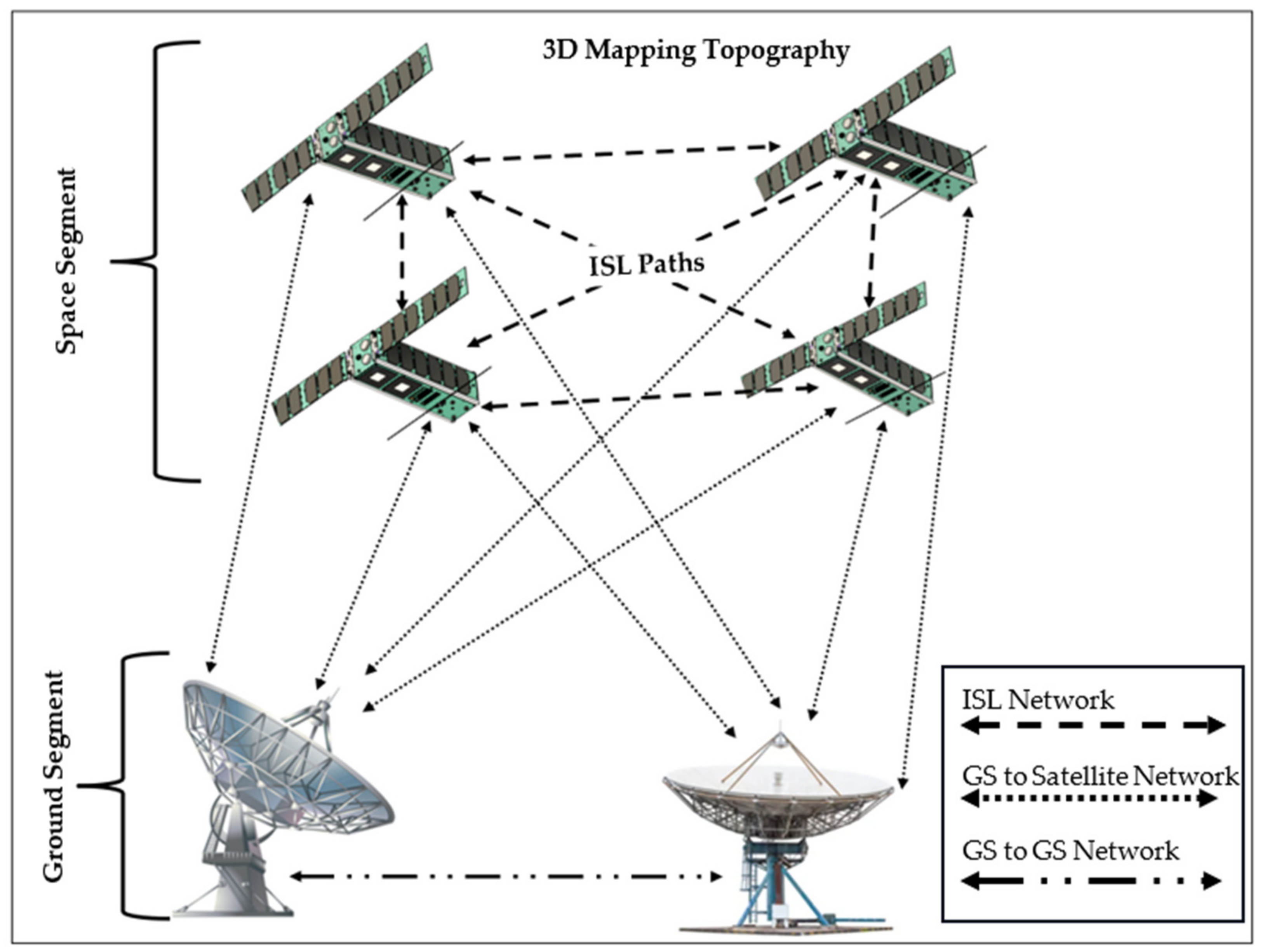

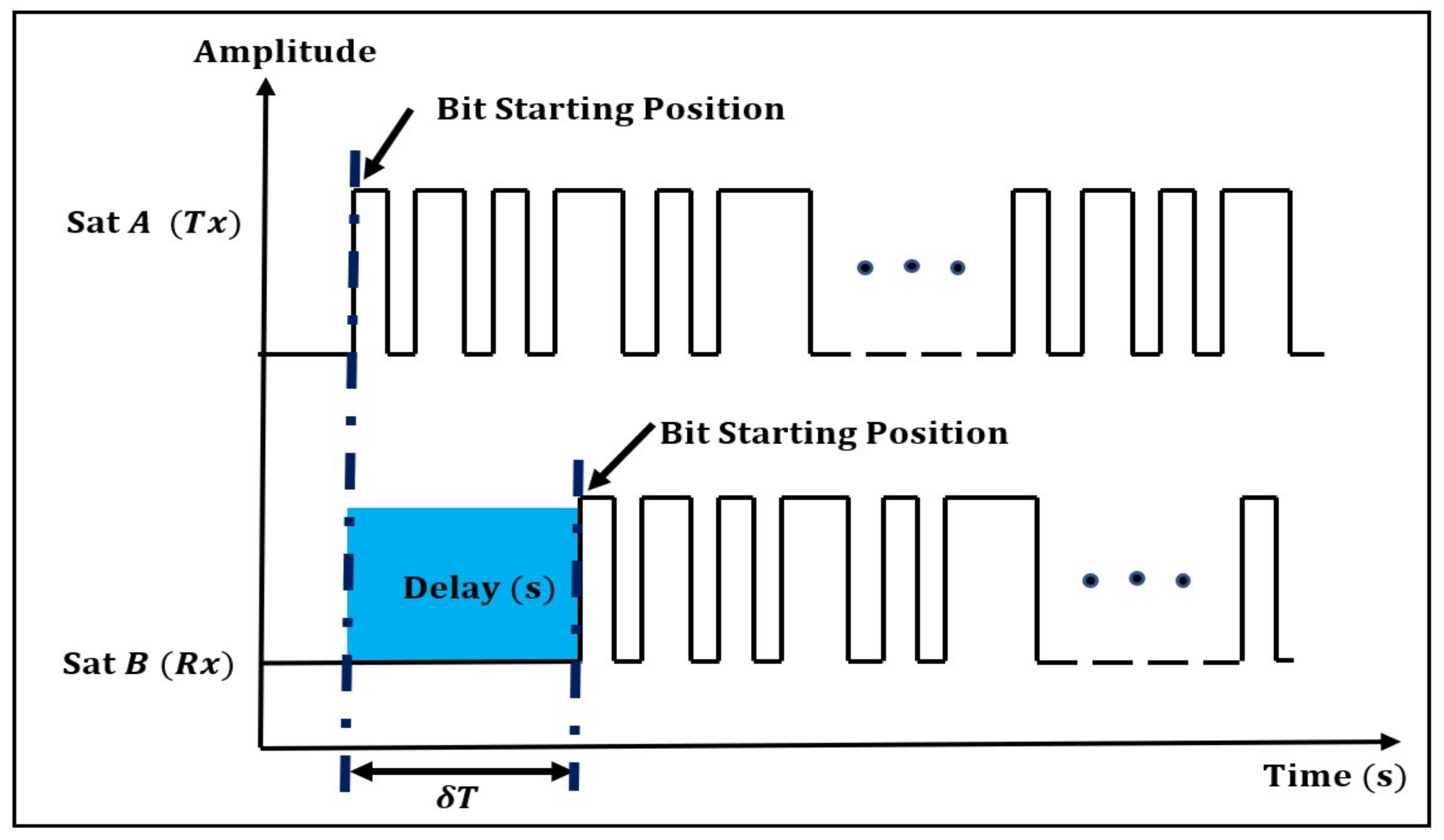



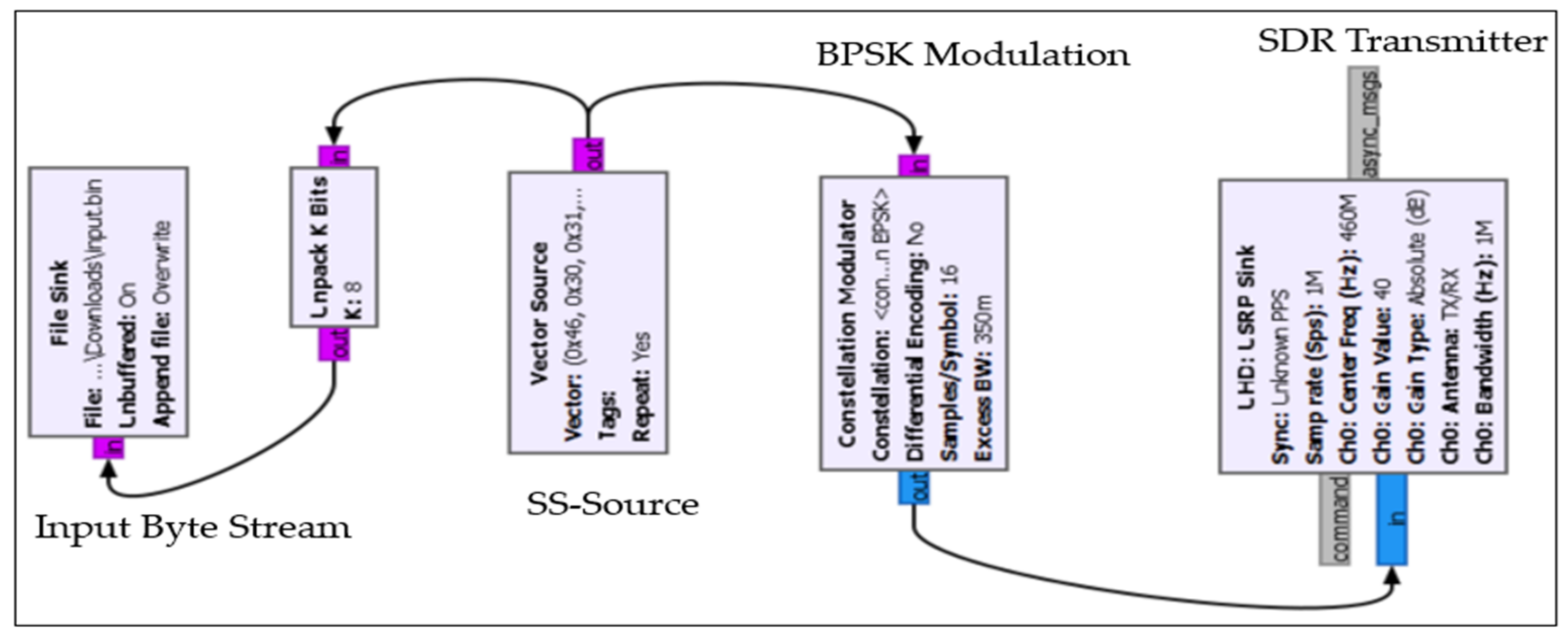
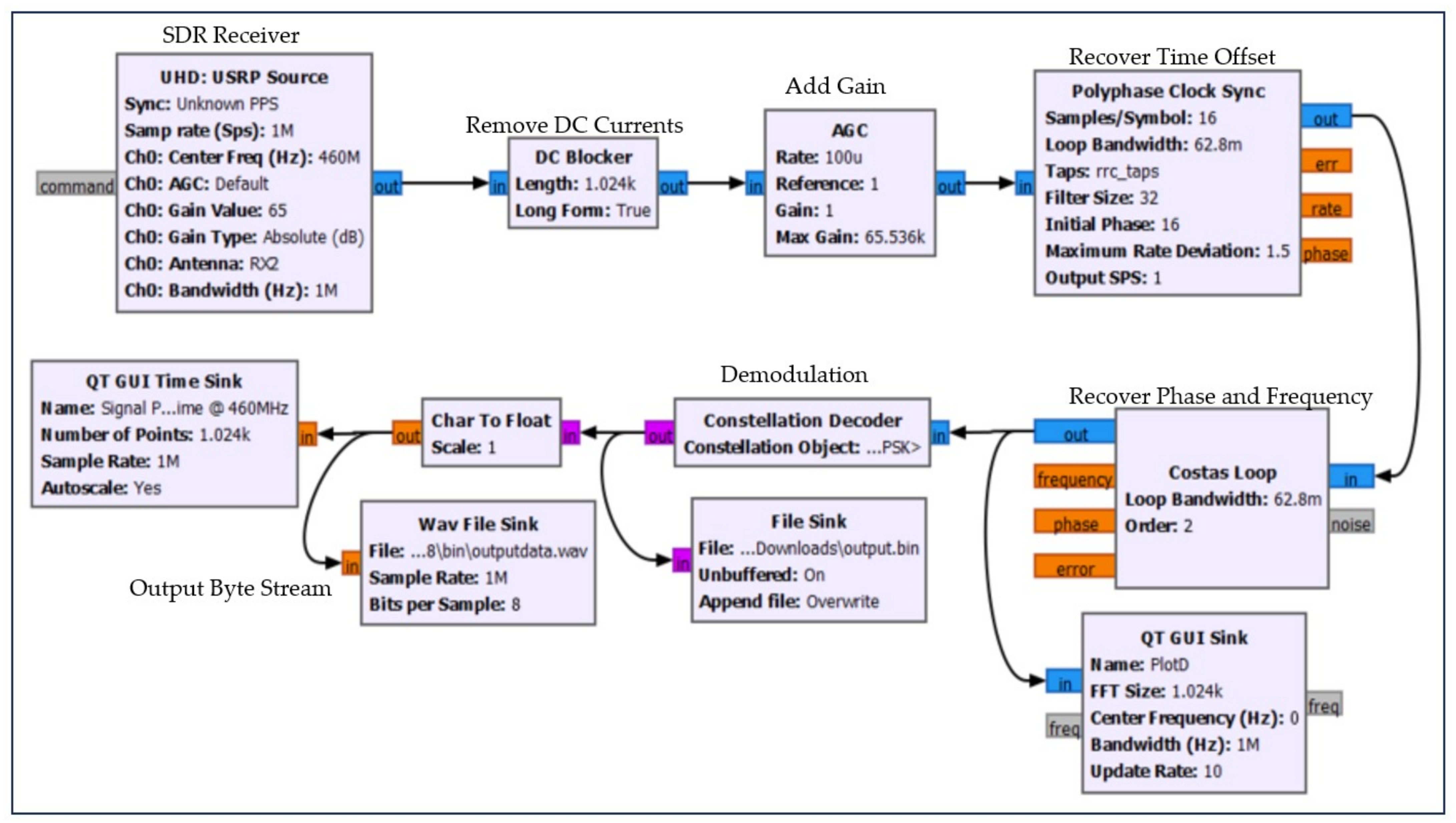




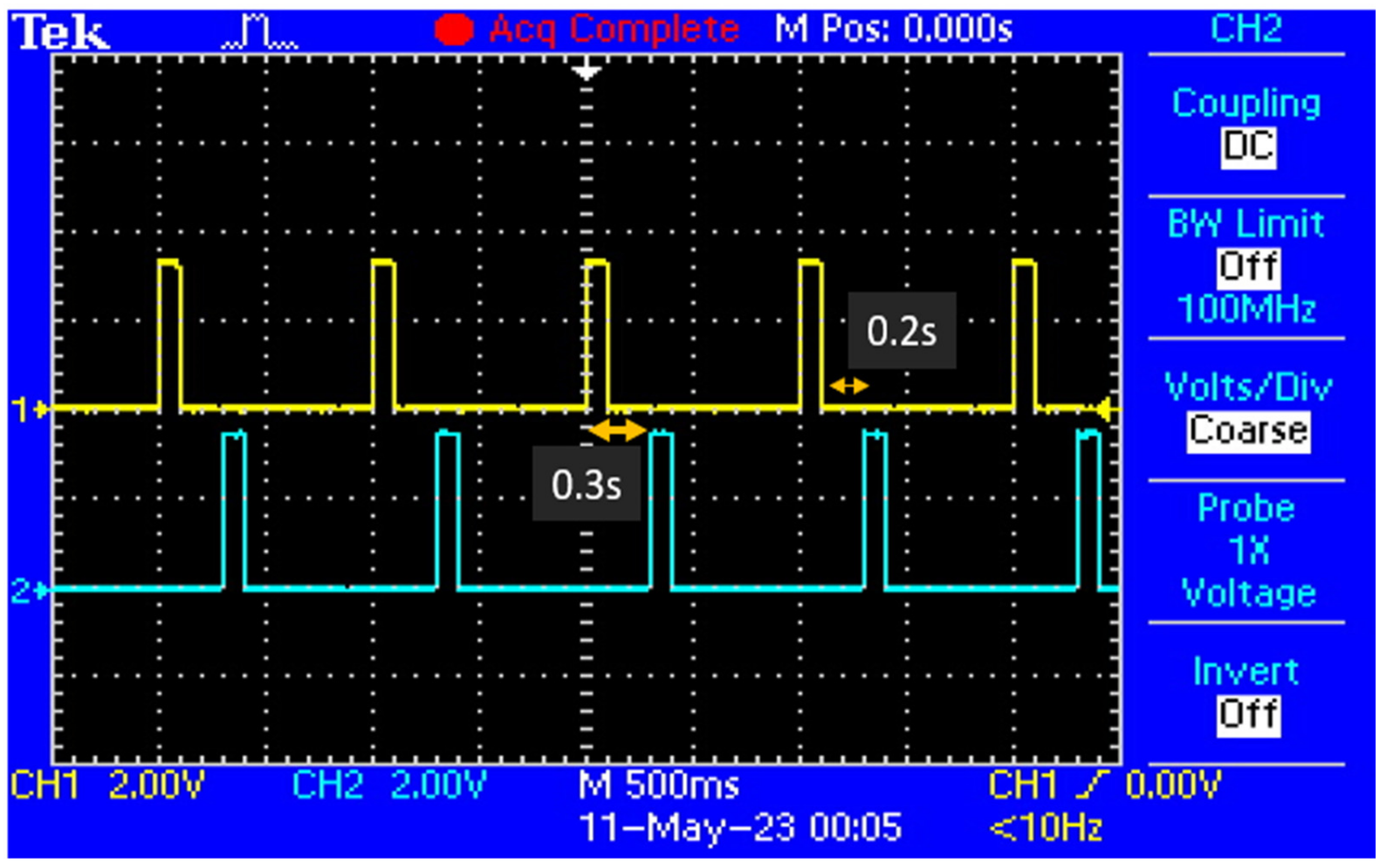


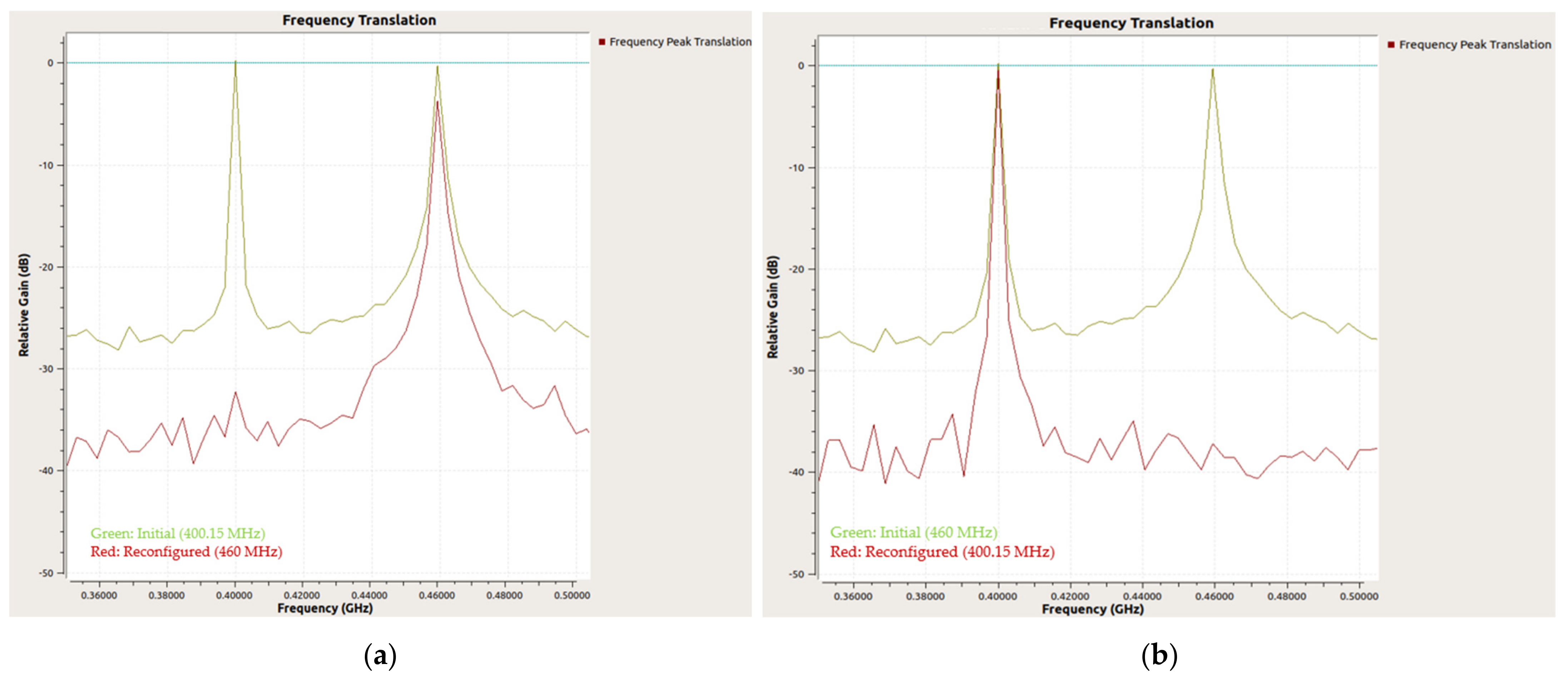

| Technique | Observing Geometry | Temporal Resolution | Spatial Resolution | Accuracy | Conditions |
|---|---|---|---|---|---|
| Surface meteorology | ground | 1–60 min | few meters–tens of meters | few mm | affected by environment |
| Lidar | ground, air, and space | low–high depending on observing geometry | low–high | few mm | cloud-free sky |
| Microwave radiometers | ground, air, and space | 5–15 min | low–high | 1–5 mm | rain-free sky |
| Sun photometer | ground | few times with high solar illumination intensity | High | few mm | direct sunlight and clear sky |
| VLBI | ground | mins–days (depends on schedule) | very low (few sites) | few mm | none |
| Polar satellites | space | 6–12 h | 1–10 km | few mm–1 cm | none |
| Radio sondes | air | 1–4 times a day | low | 1–3 mm | none |
| Imaging spectroradiometers | space | MODIS (1–2 days) MERIS (3 days) | MODIS (250 m–few km), MERIS (300 m) | few mm–1 cm | cloud–free sky |
| Remotely piloted vehicles and Instrumented aircraft | air | depends on flight duration (few mins–few hrs.) | few meters–tens of meters | few mm | depends on weather |
| In-SAR | space | 6–12 days | high | 1–2 mm | none |
| GNSS satellites (radio occultation) | space | 1–60 min | high | 1–5 mm | none |
| GNSS satellites to standard GPS ground receivers | ground | 30 s–few mins | tens–hundreds of km | 1–5 mm | none |
| Geostationary satellites | space | Mins–hourly updates | one–tens of km | few mm–few cm | none |
| Bands | MHz) | MHz) | Maximum Frequency Gap |
|---|---|---|---|
| Available band pairs | 400.15–401.00 | 460.00–470.00 | 69.85 |
| Selected bands | 400.15 | 460.00 | 59.85 |
| (dBm) | (dB) | (dB) | (dBm) | Success Rate Based on Gain (dB) | |||||
|---|---|---|---|---|---|---|---|---|---|
| 40 | 50 | 60 | 70 | 75 | 76 | ||||
| 20 | −100 | −100.2 | −80.2 | o | |||||
| 20 | −120 | −120.2 | −100.2 | x | o | ||||
| 20 | −130 | −130.2 | −110.2 | x | o | ||||
| 20 | −135 | −135.2 | −115.2 | x | o | ||||
| 20 | −136 | −136.2 | −116.2 | o | |||||
| 20 | −137 | −137.2 | −117.2 | x | x | ||||
| 20 | −137 | −138.2 | −118.2 | x | |||||
| Frequency | MHz | 400.15 | 460.00 | |
|---|---|---|---|---|
| Modulation | SS-BPSK | SS-BPSK | ||
| Data rate | kbps | 0.25 | 0.25 | |
| Satellite A (Transmission) | ||||
| Transmitter Output Power | SDR Output | W | 0.1 | 0.1 |
| Amplifier Output | W | 30.0 | 30.0 | |
| Total | dBw | 14.8 | 14.8 | |
| Gain of Transmitting Antenna | dBi | 2.1 | 2.1 | |
| Transmission Line Loss + Hardware Degradation | dB | 3.0 | 3.0 | |
| Equivalent Isotropic Radiated Power (EIRP) | dBw | 13.9 | 13.9 | |
| Transmission Path | ||||
| Distance between satellites | km | 4600 | 4600 | |
| Antenna Pointing Loss | dB | 3.0 | 3.0 | |
| Polarization Loss | dB | 3.0 | 3.0 | |
| Atmospheric and Ionospheric Losses | dB | 1.4 | 1.4 | |
| Free Space Loss | dB | 157.7 | 159.0 | |
| Isotropic Signal Level at Spacecraft | dBw | −151.3 | −152.5 | |
| Satellite B (RX Power Sensitivity) | ||||
| Antenna Pointing Loss | dB | 3.0 | 3.0 | |
| Gain of Receiving Antenna | dBi | 2.1 | 2.1 | |
| Transmission Line Loss + Hardware Degradation | dB | 3.0 | 3.0 | |
| Received Power at LNA input | dBw | −155.2 | −156.4 | |
| dBm | −125.2 | −126.4 | ||
| Required Signal power at the Spacecraft | dBm | −116.0 | −116.0 | |
| System Link Margin | dB | −9.2 | −10.4 | |
Disclaimer/Publisher’s Note: The statements, opinions and data contained in all publications are solely those of the individual author(s) and contributor(s) and not of MDPI and/or the editor(s). MDPI and/or the editor(s) disclaim responsibility for any injury to people or property resulting from any ideas, methods, instructions or products referred to in the content. |
© 2023 by the authors. Licensee MDPI, Basel, Switzerland. This article is an open access article distributed under the terms and conditions of the Creative Commons Attribution (CC BY) license (https://creativecommons.org/licenses/by/4.0/).
Share and Cite
Nyamukondiwa, R.M.; Orger, N.C.; Nakayama, D.; Cho, M. A Study on the Derivation of Atmospheric Water Vapor Based on Dual Frequency Radio Signals and Intersatellite Communication Networks. Aerospace 2023, 10, 807. https://doi.org/10.3390/aerospace10090807
Nyamukondiwa RM, Orger NC, Nakayama D, Cho M. A Study on the Derivation of Atmospheric Water Vapor Based on Dual Frequency Radio Signals and Intersatellite Communication Networks. Aerospace. 2023; 10(9):807. https://doi.org/10.3390/aerospace10090807
Chicago/Turabian StyleNyamukondiwa, Ramson Munyaradzi, Necmi Cihan Orger, Daisuke Nakayama, and Mengu Cho. 2023. "A Study on the Derivation of Atmospheric Water Vapor Based on Dual Frequency Radio Signals and Intersatellite Communication Networks" Aerospace 10, no. 9: 807. https://doi.org/10.3390/aerospace10090807
APA StyleNyamukondiwa, R. M., Orger, N. C., Nakayama, D., & Cho, M. (2023). A Study on the Derivation of Atmospheric Water Vapor Based on Dual Frequency Radio Signals and Intersatellite Communication Networks. Aerospace, 10(9), 807. https://doi.org/10.3390/aerospace10090807







